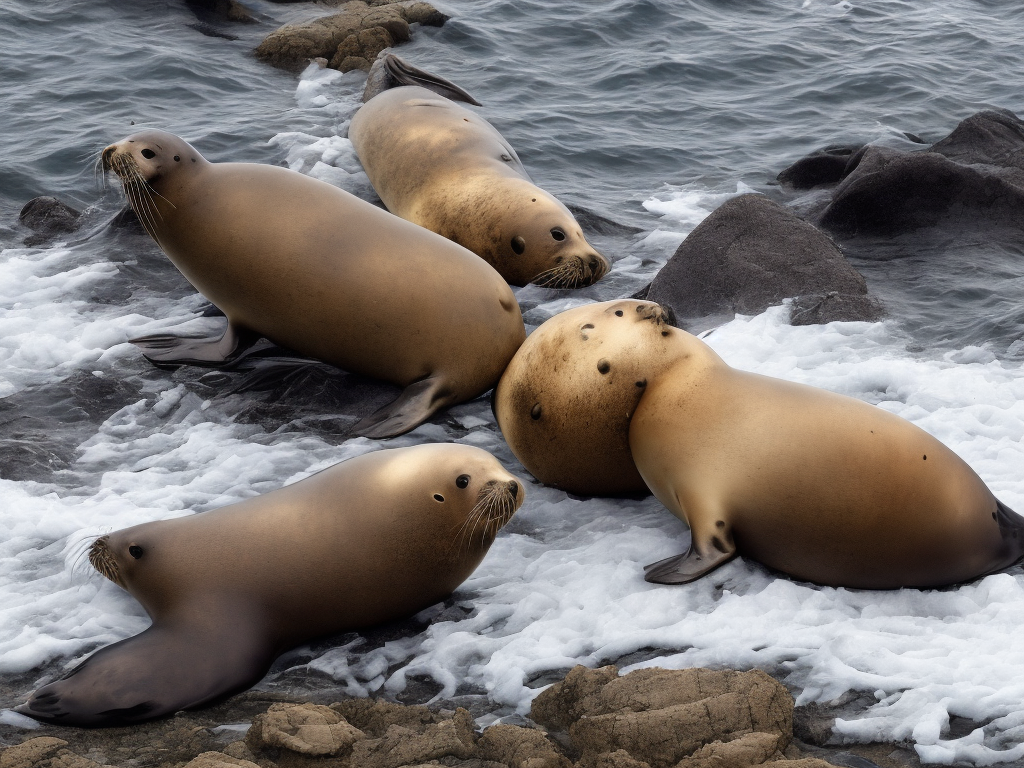
Seals and sea lions are two aquatic mammals that are often confused with each other. They are both carnivorous and they inhabit coastal waters, but they have distinct physical and behavioral differences. In this article, we will explore the difference between seals and sea lions.
Physical Differences
One of the most apparent differences between seals and sea lions is their physical appearance. Seals are generally smaller and more streamlined than sea lions. They have a rounder head and a smooth, slim, and firm body which is perfect for moving through water with ease. Seals have shorter front flippers that they mostly use for swimming. Their hind flippers are fused together and point backward, which means they're a bit awkward when it comes to walking on land.
Sea lions, on the other hand, are bigger and have a broader, more elongated head than seals. They have a muscular and elongated body with larger and more flexible flippers, which they mostly use for steering, diving, and swimming. Their hind flippers are not fused, but rather they can rotate forward which makes them perfect for walking on land.
Another difference between the two mammals is their fur. Seals have shorter and more dense fur, which is perfect for aquatic life, and they do not have external ear flaps. Sea lions, on the other hand, have longer and coarser fur which helps them stay warm, and they have visible external ear flaps.
Behavioral Differences
Seals and sea lions have different behaviors that are often used to distinguish between them. Seals are known to be more solitary and are less social than sea lions. They tend to use quiet sounds and body language to communicate with one another. Seals can dive deep into the sea and can hold their breath for a long time. They are often seen resting on the beach, rocks or ice, and are generally less active on land.
Sea lions are more social and have a complex communication system that includes barks, growls, and roars. They are known to gather in large groups to rest, mate and feed. Sea lions are highly active both on land and in the water, and they are known to perform various acrobatic tricks while swimming.
Habitat Differences
Seals and sea lions are found in different regions around the world. Seals generally inhabit both the Arctic and Antarctic waters as well as the coastal waters of the Northwest Pacific and the North Atlantic. They are commonly seen in rocky or sandy areas that are close to the shore. Seals are also known to migrate long distances in search of food.
Sea lions are usually found in the coastal waters of the Pacific Ocean from California up to Alaska, as well as in some parts of South America, Australia, and New Zealand. Sea lions prefer to live on rocky beaches or in coastal caves and islands where they can easily climb in and out of the water.
Diet Differences
Seals and sea lions are both carnivorous, but they have differences in their diet. Seals generally feed on a diet of fish, crustaceans, and sometimes squid while sea lions mostly prey on fish, including anchovies, herring, and salmon. These mammals use different hunting techniques to catch their prey. Seals will silently swim up to their target and capture it in one swift motion. Sea lions on the other hand use speed, agility, and brute force to catch their prey. They are known to work in groups, chasing and herding fish into shallow waters where they can easily catch them.
In Conclusion
Seals and sea lions may look similar to each other, but they have distinct physical, behavioral, habitat and diet differences. Understanding these differences is important for anyone who wants to appreciate these magnificent creatures. It is also important to note that both seals and sea lions are protected species, so it is important to show them respect and follow any guidelines or regulations in place when observing them in their natural habitats.
 Self-Instruct
Self-Instruct